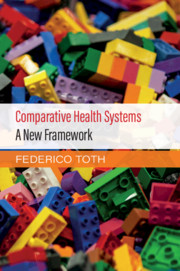11 results
The Road to Universal Coverage: Where Are We Now?
-
- Journal:
- Journal of Law, Medicine & Ethics / Volume 51 / Issue 2 / Summer 2023
- Published online by Cambridge University Press:
- 01 September 2023, pp. 440-442
- Print publication:
- Summer 2023
-
- Article
- Export citation
3 - Healthcare Expenditure and Insurance Coverage
-
- Book:
- Comparative Health Systems
- Published online:
- 20 August 2021
- Print publication:
- 09 September 2021, pp 66-87
-
- Chapter
- Export citation

Comparative Health Systems
- A New Framework
-
- Published online:
- 20 August 2021
- Print publication:
- 09 September 2021
Autonomy, Coercion, and Public Healthcare Guarantees: The Uptake of Sofosbuvir in Germany
-
- Journal:
- Cambridge Quarterly of Healthcare Ethics / Volume 30 / Issue 1 / January 2021
- Published online by Cambridge University Press:
- 29 December 2020, pp. 90-102
-
- Article
- Export citation
EXCHANGE: EXPLAINING THE PASSAGE OF UNIVERSAL HEALTHCARE IN THAILAND
-
- Journal:
- Journal of East Asian Studies / Volume 20 / Issue 1 / March 2020
- Published online by Cambridge University Press:
- 03 March 2020, pp. 99-119
-
- Article
- Export citation
Antimalarial bednet protection of children disappears when shared by three or more people in a high transmission setting of western Kenya
-
- Journal:
- Parasitology / Volume 146 / Issue 3 / March 2019
- Published online by Cambridge University Press:
- 10 September 2018, pp. 363-371
-
- Article
- Export citation
Is universal and uniform health insurance better for China? Evidence from the perspective of supply-induced demand
-
- Journal:
- Health Economics, Policy and Law / Volume 15 / Issue 1 / January 2020
- Published online by Cambridge University Press:
- 06 August 2018, pp. 56-71
-
- Article
- Export citation
OVERCOMING THE BARRIERS TO ACHIEVING UNIVERSAL HEALTH CARE IN THE ASIAN REGION
- Part of
-
- Journal:
- International Journal of Technology Assessment in Health Care / Volume 34 / Issue 4 / 2018
- Published online by Cambridge University Press:
- 10 July 2018, pp. 352-359
-
- Article
- Export citation
STAKEHOLDER INVOLVEMENT IN THE HEALTH TECHNOLOGY ASSESSMENT PROCESS IN LATIN AMERICA
- Part of
-
- Journal:
- International Journal of Technology Assessment in Health Care / Volume 34 / Issue 3 / 2018
- Published online by Cambridge University Press:
- 11 June 2018, pp. 248-253
-
- Article
- Export citation
HEALTH TECHNOLOGY ASSESSMENT FOR DECISION MAKING IN LATIN AMERICA: GOOD PRACTICE PRINCIPLES
- Part of
-
- Journal:
- International Journal of Technology Assessment in Health Care / Volume 34 / Issue 3 / 2018
- Published online by Cambridge University Press:
- 11 June 2018, pp. 241-247
-
- Article
-
- You have access
- Open access
- HTML
- Export citation
Bridging the gap in pension participation: how much can universal tax-deferred pension coverage hope to achieve?
-
- Journal:
- Journal of Pension Economics & Finance / Volume 13 / Issue 4 / October 2014
- Published online by Cambridge University Press:
- 20 February 2014, pp. 439-459
-
- Article
- Export citation

